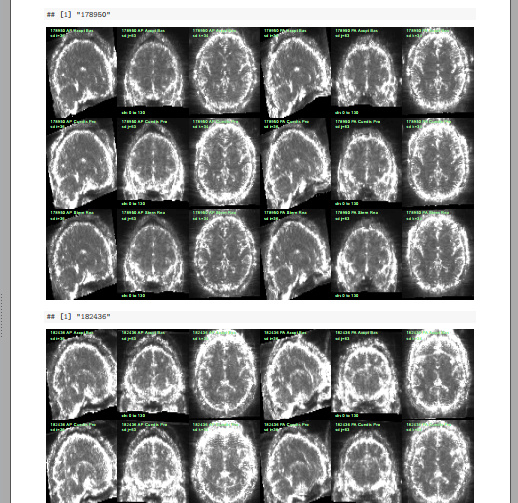- addnode (intensity, r, g, b, a: integer) this command adds a new point to the color table.
- azimuth (degree: integer) This command rotates the rendering.
- azimuthelevation (azi, elev: integer) Sets the viewer location.
- backcolor (r, g, b: integer) Changes the background color, for example backcolor(255, 0, 0) will set a bright red background
- bmpzoom (z: integer) copy and save bitmaps at higher resolution than screen. bmpzoom(2) will save images at twice the resolution.
- cameradistance (z: float) Sets the viewing distance from the object.
- changenode (index, intensity, r, g, b, a: integer) This command adjusts a point in the color table.
- clip (depth: float) Creates a clip plane that hides information close to the viewer.
- clipazimuthelevation (depth, azi, elev: float) Set a view-point independent clip plane.
- colorbarposition (p: integer) Sets the position of the colorbar: 1=bottom, 2=left, 3=top, 4=right.
- colorbarsize (f) Change width of color bar f is a value 0.01..0.5 that specifies the fraction of the screen used by the colorbar
- colorbarvisible (visible: boolean) Shows a colorbar on the main images.
- colorname (filename: string) Loads the requested colorscheme for the background image.
- contrastformvisible (visible: boolean) Shows or hides the contrast and color window.
- contrastminmax (min, max: float) sets the minumum nd maximum value for the color lookup table.
- cutout (l, a, s, r, p, i: float) Selects a sector to remove from rendering view.
- elevation (deg: integer) changes the render camera up or down.
- exists (filename): boolean Returns true if file exists.
- extract (levels, dilatevox: integer; oneobject: boolean) Attempts to remove noise speckles from dark regions (air) around object. Levels=1..5 (larger for larger surviving image), Dilate=0..12 (larger for larger surround). You can also specify if there is a single object or multiple objects
- fontname (filename) Changes font used for colorbar. For example, "fontname('ubuntu')" will use the Ubuntu font.
This file has been truncated. show original


